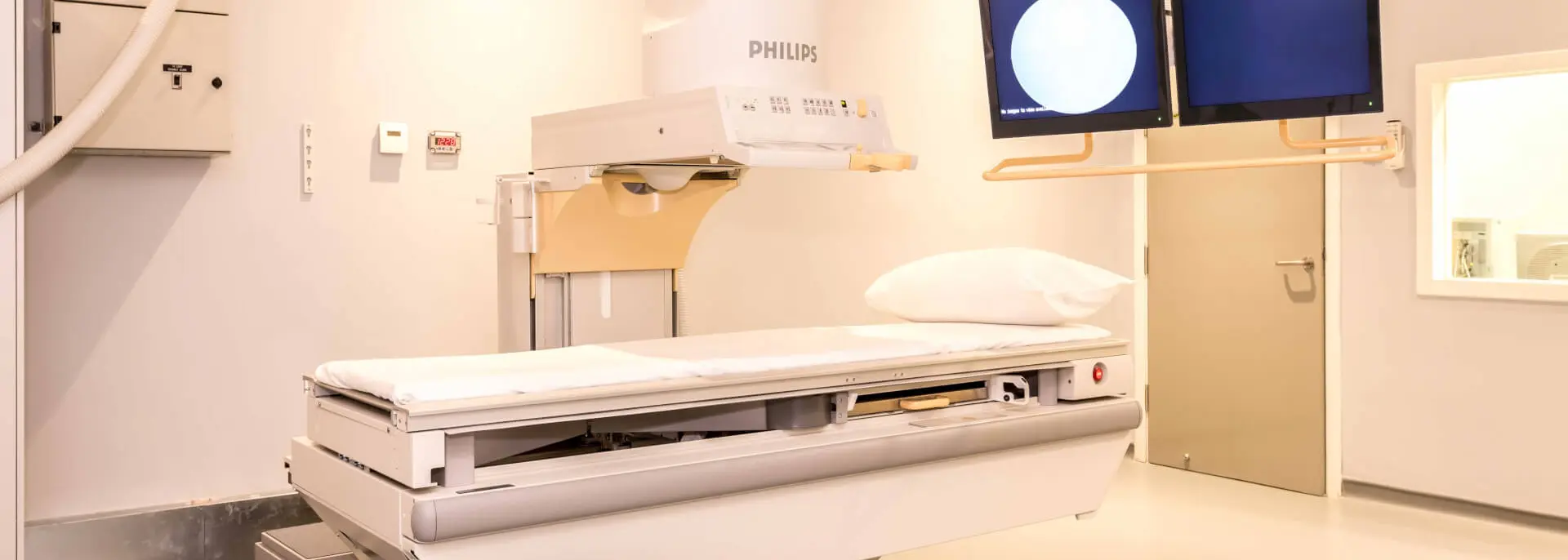
Surgical Oncology
Effective treatment of cancer involves a multi-modality approach to give patients the best chance of survival. At Gleneagles Hospital, patients have access to a wide variety of treatment options tailored to their unique conditions that includes the latest surgical treatments.
Hyperthermic Intraperitoneal Chemotherapy (HIPEC)
Following tumour removal, some cancers can recur after a period of remission. Recurring cancers are often found in the abdomen of the patient. Hyperthermic intraperitoneal chemotherapy (HIPEC) is the latest treatment to target recurring cancer in the abdomen. HIPEC delivers the chemotherapy treatment directly to the abdomen during surgery and is frequently used to treat colorectal cancer. Besides being more effective than systemic chemotherapy, HIPEC causes less undesirable side effects to the patient. Patients who undergo HIPEC have shown to have longer remission periods and higher survival rates.
Autologous Stem Cell Transplant
Autologous stem cell transplant is a treatment for patients with blood cancers such as lymphoma, leukaemia and myeloma. It restores the body's ability to make normal blood cells after high-dose chemotherapy or radiation. First, stem cells are taken from the patient’s blood via peripheral blood stem cell transplantation (PBSCT). After chemotherapy to remove the diseased bone marrow cells, the collected stem cells are transferred back to the patient’s bloodstream, allowing the bone marrow to produce new blood cells. Autologous stem cell transplant is a treatment that poses low risk for complications as patients will not reject their own cells.
Endobronchial Ultrasound Bronchoscopy (EBUS)
Endobronchial ultrasound bronchoscopy (EBUS) is a minimally invasive but highly effective procedure used to diagnose diseases in the chest. It is a technique that uses ultrasound along with bronchoscope to visualise the airway, providing real-time imaging of the surface of the airways, blood vessels, lungs, and lymph nodes. Furthermore, EBUS allows physicians to obtain tissue or fluid samples from the lungs and surrounding lymph nodes via needle aspiration, without conventional surgery. The samples can be used for diagnosing and staging lung cancer, detecting infections, and identifying inflammatory diseases that affect the lungs, such as sarcoidosis or other cancers like lymphoma.
Trans-anal Minimally Invasive Surgery (TAMIS)
Trans-anal minimally invasive surgery (TAMIS) is a minimally invasive surgical technique that combines trans-anal endoscopic microsurgery (TEM) and laparoscopy for removing tumours within the rectum. It is typically done for patients with early cancers in the rectum. TAMIS is performed entirely through the body’s natural opening, requiring no skin incisions to gain access to the tumour. Thus, it is a low-risk surgery that avoids the conventional surgery that requires pelvic resection where a major portion of the large intestine is removed. TAMIS removes precisely the diseased tissue and aims to preserve normal bowel function. The benefits of TAMIS include preservation of the anal sphincter, avoidance of stoma, less operative time, faster recovery, shorter hospital stay and less complications after surgery. TAMIS also offers scar-free recovery that provides a quick return to normal bowel function.
Surgery for Gynaecological Cancers
Surgery is the most important component in the treatment of gynaecological cancers such as cervical cancer, ovarian cancer, uterine cancer, and vulval cancer. Pre-cancer of the cervix can be effectively treated with Loop Electrosurgical Excision Procedure (LEEP), which is a simple procedure under local anaesthesia. LEEP is performed by using a small electrical wire loop to remove the pre-cancerous tissue, thereby preventing the patient from developing cervical cancer. Some patients may require a surgical procedure called cone biopsy to treat pre-cancer as well as help in the diagnosis of early cervical cancer. For patients diagnosed with early cervical cancer, an operation called radical hysterectomy and pelvic lymph node dissection (PLND) can have a cure rate of nearly 90%.
For ovarian cancer, the cornerstone of treatment is optimal surgical cytoreduction – an operation that involves the removal of the uterus, fallopian tubes and ovaries, as well as tumour deposits within the abdominal cavity. Most patients with cancer of the uterus can be cured with hysterectomy and removal of the ovaries. Some patients with high-risk uterine cancer may require in addition removal of the lymph nodes (lymphadenectomy). Early cancer of the vulva is treated by a major operation called radical vulvectomy and groin node dissection. With appropriate surgery, performed by an experienced and skilled gynaecological oncologist, many patients with gynaecological cancers can be cured. Chemotherapy and radiotherapy are additional modalities of treatment the patient might need.
Whipple Operation
For pancreaticodoudenectomy (whipple procedure) is a major surgical operation mostly done for pancreatic head cancer, trauma or chronic pancreatitis.
It involves removal of the pancreatic head, duodenum, jejunum, gallbladder and occasionally portion of the stomach.
The operation usually takes 4-8 hours depending on complexity. This is a technically difficult procedure and involves a dedicated surgical team that does this consistently.


